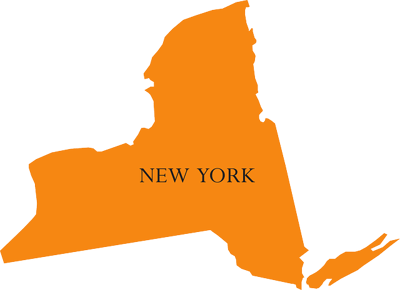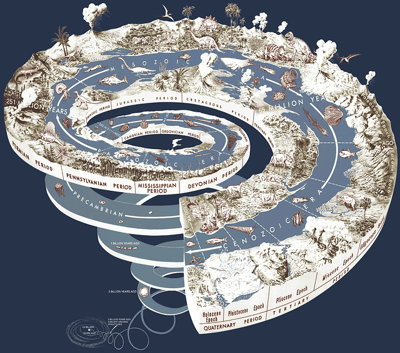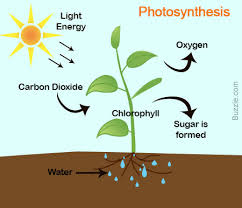Nys Living Environment Regents Review Ecology One Irreverisble Effect of Deforestation
Some states in the U.S. crave students to take and pass a standardized examination in society to graduate from high schoolhouse with a diploma. If yous live in the state of New York, you'll have to take and laissez passer a standardized test called the Regents Exam in guild to earn your high schoolhouse diploma. There are several individual Regents Exams, each roofing a dissimilar bailiwick. If y'all want to get a high school diploma in the state of New York (called a Regents Diploma), y'all'll have to take and pass at to the lowest degree one science Regents examination. The Living Surroundings Regents Exam is one of four science exams offered, and we're here to help you learn everything you demand to know to help you decide if taking the Living Surroundings Regents exam is the all-time choice for yous. In our full guide to this exam, we'll cover the following: At that place'south a lot to comprehend hither, and so let'southward become going! (Alberto Chiliad. / Flickr) The Living Surroundings Regents exam is one of four science exams that loftier school students can take to fulfill the single science test requirement for receiving either a local or a regents diploma. The Living Environment Regents exam replaced the Biological science Regents Test and covers diverse topics and categories pertaining to biological science based on the New York State Core Curriculum. To receive a Regents Diploma with Advanced Designation, students need to take and pass two science Regents exams: ane life scientific discipline test and one physical science examination. The Living Environment examination is the only life science Regents exam offered, then if yous want to receive the Avant-garde Designation diploma, yous'll have to have and pass the Living Environment exam. To sum information technology up: this is one examination that you tin take it to encounter your science exam requirement if you're graduating with a regular Regents Diploma—just you lot accept to take the Living Environs Regents Exam if y'all're trying to get an Avant-garde Designation diploma. So, who can take the Living Environment Regents Exam? Any 9-12 grade New York secondary school educatee can take the Living Environment Regents Test. Put another way, if yous've completed the necessary biology coursework, y'all're allowed to take the test. This means that students both who have taken a biological science course in school and students who have learned the textile independently through alternative ways are eligible to take the examination. Additionally, you cannot be barred from taking the exam considering y'all've had disciplinary problems or didn't brand As or Bs in your biology classes. As long as your course record indicates that you've taken the necessary classes, you lot should be allowed to accept the exam! There's one other prerequisite for taking the Living Environment Regents exam: yous have to successfully consummate 1200 minutes of laboratory experience and produce acceptable written reports for each lab investigation. Students who meet this laboratory requirement are eligible to have the exam! For most students, this requirement tin be met by taking ii to three science courses that have lab components in loftier school. At present that yous know what the exam is and who might benefit from taking it, let's dig into the about important facts y'all demand to know before taking the test! To get started, we're going to give you a quick guide to the about essential facts near the Living Environment Regents Exam. Think of this like your cheat sail! Exam dates: The Living Environment Regents Exam is offered in January, June, and August annually (the Baronial 2021 date was cancelled due to the COVID-19 pandemic). Who can take the exam: Students in grades viii through 12 are eligible to take the Living Environment Regents test as long as they take attained the minimum number of required laboratory hours and are approved by a school administrator. Exam question formats: The Living Environments examination tests your noesis using a combination of multiple choice and open up response questions. Exam sections: The exam consists of five sections, or parts, labeled Part A, Part B-1, Part B-2, Part C, and Part D. Each section has the following number of questions: Part A consists of 30 multiple selection questions. Part B-1 consists of thirteen multiple choice questions. Part B-2 consists of 12 multiple choice and open response questions. Part C consists of 17 open response questions. Role D consists of xiii multiple choice and open response questions. Test scoring: Exam takers must achieve an overall score of 65 in club to pass the exam. Exam length: Exam takers are allowed a maximum of three hours to complete the Living Environment exam, with no specific fourth dimension allotments for the individual sections of the examination. At present that you know some quick facts about how the test works, let'south look a little more than closely at the testing format for this exam. Knowing what to expect from the format of a standardized test before you actually sit for the test can really give you a leg-up. Here's an overview of the format of the Living Surroundings Regents Exam. The Living Environment Regents Exam has 85 questions total, and these questions are divided up amongst the v exam sections (Role A, Part B-1, Role B-2, Role C, and Part D). Each department has the following number of questions: Students taking the Living Surround Regents Exam are allotted three hours to complete the unabridged exam—that's three hours from the time that the test proctor begins the exam. But, dissimilar many other standardized tests, each section of the Living Environment Regents Exam isn't timed individually. That could make information technology difficult to know how to step yourself as you have the exam! If you desire to finish all 85 exam questions and have time to check your work before time is upwardly, you'll want to spend no more than two minutes on each exam question. That will leave yous with a ten minutes to review and/or tackle questions you lot skipped forth the way. To pass the Living Environment Regents Examination, you lot need to accomplish a score of 65. To laissez passer with distinction, you need a score of 85. But those scores don't bespeak that you've answered 65% of the test questions correctly, and they also aren't raw scores. Rather, that passing score of 65 is a scaled score: it indicates that you've successfully accomplished the ready learning standards determined by the New York Land Education Department. Generally speaking, you'll end upward receiving more points for answering harder questions correctly...hence the scaled scoring. (Too: there'south no penalty for guessing. So don't go out whatever answers bare!) The big takeaway is this: your test score isn't based on the number of questions yous reply correctly. You could accept the exam in June, and your friend could have it in August, and you could answer a different number of questions correctly and both still reach a passing score of 65 on the exam. It all depends on which questions you answer correctly, and there's no reliable way to effigy that out while y'all're taking the exam. Since the Living Environment Regents Exam took the identify of the Biology Regents Exam, the five sections of the examination cover a range of major topics pertaining to biology. These topics are determined by Standard iv of the New York Mutual Core State Standards and include seven "Central Ideas" encompassing scientific concepts, principles, and theories. If you desire to learn more most the Living Environment Core Curriculum, which determines what topics appear on the Regents Exam, visit New York'due south Land Teaching Department website. But for now, we're going to give yous a general overview of what topics each Fundamental Thought covers. Key Idea i states that, "Living things are both like to and different from each other and from nonliving things." Put another way, this Key Idea asks you to testify what yous know about how living and nonliving things rely on sure processes to stay alive and reproduce. And then, what specific concepts fall under this key idea? Here's a short list of the concepts you need to empathize and be able to explicate pertaining to Key Thought ane on the Living Environment Regents Test: Cardinal Idea ii states, "Organisms inherit genetic data in a diverseness of ways that result in continuity of structure and function between parents and offspring." This Key Idea is all about how genetics and reproduction work in organisms from all kingdoms. This requires a full understanding of DNA! Here are the concepts you'll need to sympathise related to Key Idea 2 on the exam: Key Idea 3 states, "Individual organisms and species change over time." In other words, Central Idea three is all about development. This thought asks students to exist able to explain how evolution works, be able to distinguish between evolutionary alter and the changes that occur in the lifetime of an individual organism, and describe the role of natural pick in biological development and the diversity of life on Globe today. Hither are the primary concepts you'll need to know pertaining to Key Idea 3: Cardinal Idea 4 states, "The continuity of life is sustained through reproduction and development." This cardinal thought involves cognition nearly asexual reproduction and sexual reproduction, growth, development, aging, and reproductive engineering. Concepts you demand to know for this central thought include: Knowing the procedure of photosynthesis is one of the elements of Fundamental Idea 5. Key Idea 5 states, "Organisms maintain a dynamic equilibrium that sustains life." The central concept to this key idea is homeostasis. Organisms have a diversity of homeostatic feedback mechanisms that maintain dynamic equilibrium. When these mechanisms neglect, it can result in disease or fifty-fifty death. Y'all'll need to empathise how homeostasis works in club to successfully communicate your knowledge of this Key Idea. Here are some specific concepts you'll need to be able to explain: Cardinal Idea 6 states, "Plants and animals depend on each other and their physical environs." This key idea asks y'all to exist able to articulate how ecological processes piece of work, including competition betwixt members of unlike species and inside species, and to exist familiar with the concept of food chains and webs. Specific concepts related to ecology that y'all need to know include The seventh and final Key Thought that is included on the Living Environment Regents Exam states, "Human decisions and activities have had a profound impact on the concrete and living environment." This Primal Idea is asking you to remember about how human being activity affects and changes the living environs, causing or perpetuating phenomena like pollution, deforestation, extinction of species, global warming, and alteration of the ozone shield. This key idea is also politically oriented: information technology asks students to think critically about how they tin make a departure environmentally literate citizens in the earth. You'll need to know the post-obit concepts: Like nosotros mentioned earlier, there are 5 sections on the Living Environment Regents Exam comprised of a mix of multiple choice and open response questions. Now, nosotros're going to look at each question type (with examples) to help familiarize you with the test. All five sections of the Living Environs Regents exam include at least some multiple-choice questions. Your selected answer for each multiple choice question should exist recorded on a separate answer sail that will be provided with your test. Unlike many multiple-choice questions, this exam uses numbers for each answer choice rather than letters. Each multiple-option question has iv possible answers, designated past the numbers (one), (two), (3), and (iv). For each multiple option question, in that location is but one possible correct answer. On each section of the exam, the multiple-pick questions can vary in type, but at that place are two main types of multiple-pick questions on the Living Environments examination: These question types may too include diagrams, passages of text, photographs, or data charts that you lot'll exist asked to utilize to determine the correct respond as well. Let's await at some examples of multiple-choice questions from the August 2019 Living Environs Regents Examination to help you get a clearer picture of what to wait from this blazon of question on the examination! Nosotros'll start with a sample test question that presents a statement that y'all must complete by selecting the correct reply choice: When treatment cat litter, humans tin can potentially be exposed to a harmful single-celled protozoan. Its chief host is the common domestic cat, simply it tin also alive in humans. This protozoan is an example of a To answer this question, yous'll need to utilize your knowledge of biology to determine the correct answer that completes the sentence. Specifically, this question asks you to prove your knowledge of Central Idea half-dozen from the Living Environs Core Curriculum, which is all about environmental. If you tried to reply this question and chose answer choice (3) parasite, you got information technology right! Next, let's have a await at a sample test question that asks a question that you need to reply correctly: Certain seaweeds contain a greater concentration of iodine inside their cells than there is in the seawater surrounding them. The energy required to maintain this concentration difference is most closely associated with the action of Like the previous sample question, this 1 corresponds with a central thought from the Core Curriculum: Cardinal Thought i. Central Idea 1 asks y'all to demonstrate what you know most the components of living systems, from unmarried cells to ecosystems, and how they interact to maintain remainder in the living environment. So, what'southward the right respond to this question? You lot got it right if you picked (ii) mitochondria! The other blazon of question on the Living Environs Regents Exam is open up response. In other words, instead of being given a set of answers to choose from, you volition write out your own right reply using your existing knowledge of biology. Three of the 5 sections of the examination will include a diverseness of open-ended response questions: Part B-2, Part C, and Part D (and Office C is all open response questions). The open response questions on the test may ask yous to provide correct answers in i or more of the following formats using space provided in the exam booklet itself (not on the separate answer sheet): That means that in order to do well on these questions, it'due south important that you know the material and can articulate your answer in writing. At present, hither are a few sample open response questions to familiarize you with what this type of question will look like on the exam! First, hither's a sample question that asks y'all to provide a short answer in writing: Explain why biomass is considered a renewable energy source. In the test booklet, you'll be given two to three lines to write out an explanation for why biomass is considered a renewable free energy source. Like the multiple selection questions, the open response questions on the exam correspond with Key Ideas from the Cadre Curriculum. This question corresponds with Key Idea 7, which covers the interrelationships of humans with the living and nonliving surround. According to the Living Environment Rating Guide for exam scorers, the post-obit would exist considered adequate responses to the question above: The Living Environment Regents Exam too includes fill-in-the-blank open up-response questions, like this one: Photosynthesis is a process that is important to the survival of many organisms on Earth. Place 2 raw materials necessary for photosynthesis. ________________________________ and _______________________________ For questions like this one, the exam will instruct you lot to record your answers directly in the blanks provided in the exam booklet. So, what do you lot demand to know to answer this open up response question? Y'all'll need to know the content that corresponds with Central Thought 5, which covers the biochemical processes of living organisms and homeostasis. The exam Rating Guide states that the following answers would be considered adequate responses to the question in a higher place: We've covered shorter questions and answers for the open-response questions on the exam, so allow'due south finish up here with a sample question that asks you lot to read a short passage and answer several questions in paragraph grade: Most humans relish candy, cake, and ice cream. As a result of evolutionary history, we have a wide variety of tastes. This is non true of all animals. Cats do non seek sweets. Over the grade of their evolutionary history, the cat family tree lost a gene to detect sweet flavors. Most birds also lack this gene, with a few exceptions. Hummingbirds are carbohydrate junkies. Hummingbirds evolved from an insect-eating ancestor. The genes that detect the savory flavor of insects underwent changes, making hummingbirds more sensitive to sugars. These new sweet-sensing genes give hummingbirds a preference for high-calorie bloom nectar. Hummingbirds actually reject certain flowers whose nectar is not sweet enough! Discuss how sugariness sensitivity in hummingbirds has adult. In your reply, be sure to: In the test booklet, you'll be provided with approximately x lines to write out an caption in paragraph grade that addresses all 3 bullets. Your answer will draw upon your noesis of biological evolution, which corresponds with Key Idea 3. The Rating Guide states that the post-obit would be considered adequate responses to this question: Allow i credit for identifying the initial result responsible for the new sweet-sensing gene as a mutation/modify in the genetic code. Allow 1 credit for explaining how the presence of the sweet-sensing gene increased in the hummingbird population over fourth dimension. Adequate responses include, but are non express to: Allow i credit for describing how the fossil tape of hummingbird ancestors might exist used to learn more about the evolution of nutrient preferences in hummingbirds. Acceptable responses include, but are not limited to: As you can tell, the responses to these short passage questions are longer, more in depth, and crave you lot to explain yourself clearly. The play a joke on to getting total credit on these responses—beyond merely beingness able to read critically and express yourself in writing—is answering all of the questions asked by the prompt. In this case, the prompt breaks downward the things you accept to talk nearly in bullet points, namely identifying the event that caused the gene, explaining how that gene impacted the hummingbird population, and discussing how fossils can help us learn more virtually hummingbirds today. If yous affect on these three points correctly, you're well on your way to earning full credit. (Owen Moore / Flickr) Now that yous're familiar with the Living Surround Regents Exam, hither are our top tips for making certain you pass with flying colors. The majority of New York State students who take the Living Environs Regents Examination will accept taken a Living Environments or biology course earlier sitting for the test. The absolute best mode to give yous a solid foundation for the knowledge you lot'll need to pass this examination is to testify upwards to class and pay attention while you lot're there. Why? Your Living Environment teacher is required by your state teaching department to teach the concepts and skills that you lot'll be tested on when you take the Living Surroundings Regents Exam. Paying attention in class is an easy fashion to get expert guidance on what you need to know to pass the test. That'southward as well a large reason to take proficient notes in class. When it comes time to starting time your Living Environment Regents review, you'll desire to begin past rereading your form notes. The New York Land Education Section website conveniently provides access to PDF files of all past Living Surround Regents Exams. Using these is an astonishing way to help you study for the exam! Having open, easy access to all of these past exams ways you accept access to dozens of questions you lot can use for practice. Yous could even administer a do examination to yourself using the most recently administered Living Surround Regents Examination. Find a tranquillity place to work, fix yourself an alarm for iii hours, and work your fashion through the nearly contempo examination to help you get a feel for how quickly yous need to movement through the exam questions in club to finish in time. Keep in heed these are all real questions from real exams administered in past years. These tests are a fantastic mode to gain practical insight into the examination earlier you have to take it yourself. As you accept practice exams and review course materials, take note of where you lot do well and where you struggle, and use that info to make decisions about what content to spend a little extra time reviewing earlier you take the test. This strategy tin can also apply to types of questions on the examination. Maybe you're a whiz at answering multiple choice questions, merely open response questions make you lot pretty broken-hearted. Knowing where you lot succeed and struggle will help you maximize the time you spend on your NYS Living Environment Regents review. Spending more than fourth dimension practicing sample open up response questions can help you experience more than confident in your abilities when exam day arrives! If you're aiming to graduate with an Advanced Designation diploma, it's a good idea for you to take some advanced courses to prepare. Check out our articles introducing you to AP classes and IB classes, then determine which course is right for you lot. If you're already taking advanced science classes, skillful for you! Nosotros have resources to assist you lot tackle your biological science exams and help you go the scores you demand to earn college credit. Here'due south our complete guide to the AP Biology exam (and our equivalent for the IB Biology exam). If you need extra aid studying for the Living Surround Regents Test, y'all may desire to plough to professional report guides. Not only are many affordable, they're also really good at explaining tough material you lot may not have 100% understood in form. Check out this expert guide to some of the best biological science study guides on the marketplace.

What Is the New York State (NYS) Living Environment Regents Examination?

Who Tin Accept the Living Environment Regents Exam?

Living Environment Examination FAQs

Living Environs Regents Exam Testing Format
How Many Questions Are At that place Per Department?
Test Function Number of Questions Part A 30 multiple option questions Part B-1 thirteen multiple option questions Function B-2 12 questions, mix of multiple choice and open up response Part C 17 open up response questions Part D thirteen questions, mix of multiple choice and open response How Much Time Is Allotted Per Test Department?
How Is the Exam Scored?

Topics Covered on the Living Environments Regents Exam
Key Thought ane: Living Vs. Nonliving Things
Central Thought 2: Genetics and Dna

Key Idea three: Evolution
Key Thought iv: Reproduction, Growth, and Crumbling

Key Idea 5: Homeostasis
Central Idea 6: Environmental
Fundamental Idea 7: Human Impact on the Environment

Question Formats (With Sample Questions!)
Multiple-Choice Questions
Open up Response Questions

3 Tips for Acing the Living Environment Regents Exam
Tip 1: Pay Attending in Grade
Tip 2: Use Sometime Exams to Offset Your Living Surround Regents Review
Tip 3: Identify Your Strengths and Weaknesses

What'south Next?

Nigh the Author
Ashley Sufflé Robinson has a Ph.D. in 19th Century English Literature. As a content writer for PrepScholar, Ashley is passionate virtually giving college-bound students the in-depth information they need to go into the school of their dreams.
Source: https://blog.prepscholar.com/living-environment-regents-review